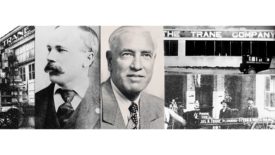Dan Holohan
Industry legend Dan Holohan retires from writing.
Read More
Heating Help | Dan Holohan
Longtime Plumbing Group columnist says goodbye
Dan Holohan bids readers a fond farewell.
December 7, 2023
Heating Help | Dan Holohan
Things to consider when replacing a steam boiler
Dry steam is the goal
August 10, 2023
Dan Holohan: Electrification may become more mainstream, but not overnight
Times change.
June 9, 2023
Dan Holohan: Why we use 180 degrees for hot-water systems
The history of The Carbon Club.
February 10, 2023
Dan Holohan: Seeing the word in a different way
Embracing new perspectives can make history.
October 10, 2022
HEATING HELP
Dan Holohan: The magic of the simple air vent
You never know what knowledge you’ll discover by reading old literature.
June 10, 2022
Keep the info flowing with our eNewsletters!
Get the latest industry updates tailored your way.
JOIN TODAY!Copyright ©2024. All Rights Reserved BNP Media.
Design, CMS, Hosting & Web Development :: ePublishing












